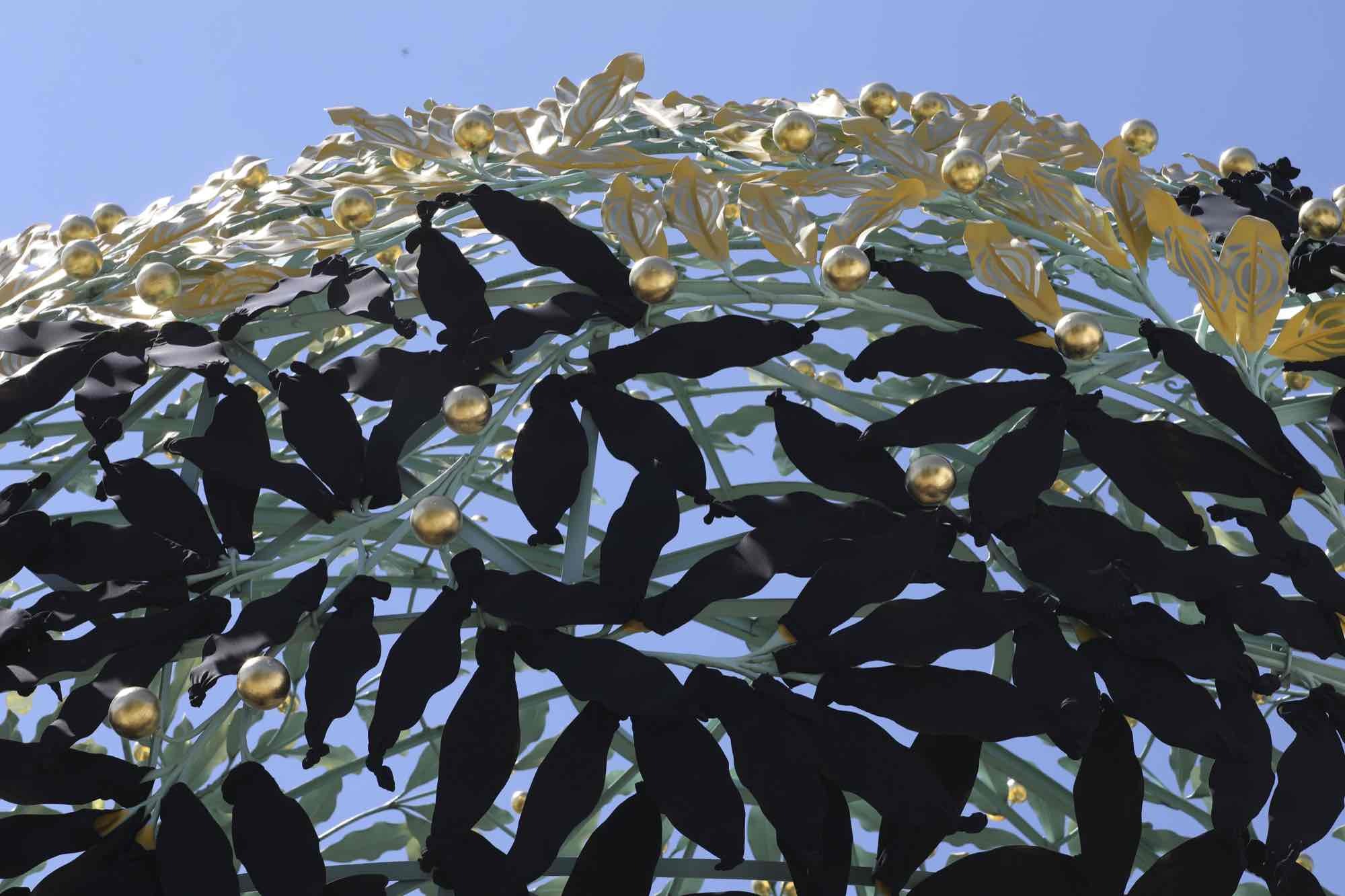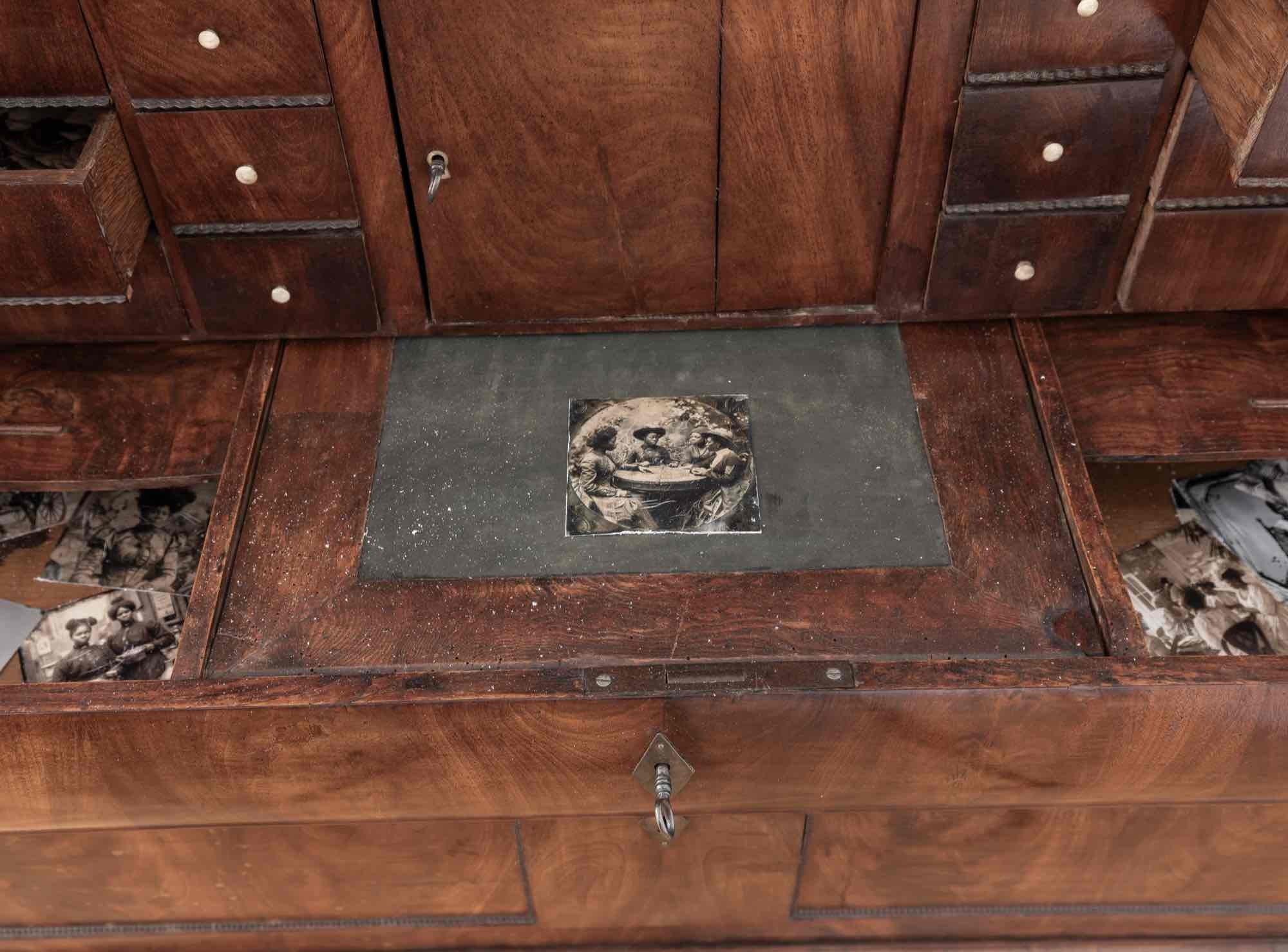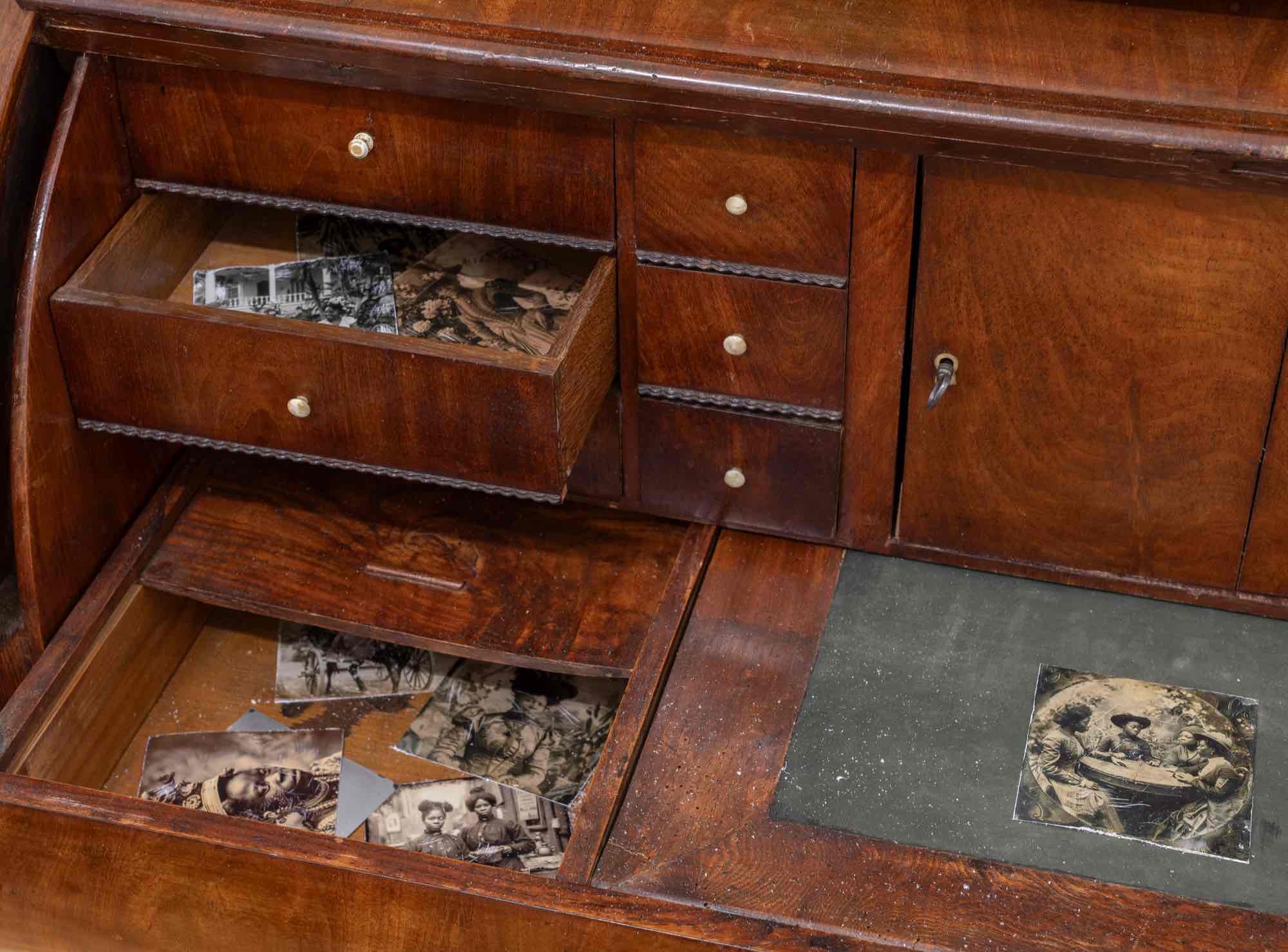Susana Pilar Delahante Matienzo
Achievement
21 Jun - 08 Sep 2024

Susana Pilar Delahante Matienzo, Statement, 2024, Secession, view of the installation setup, photo: Oliver Ottenschläger

Susana Pilar Delahante Matienzo, Statement, 2024, Secession, view of the installation setup, photo: Oliver Ottenschläger

Susana Pilar Delahante Matienzo, Statement, 2024, Secession, view of the installation setup, photo: Oliver Ottenschläger

Susana Pilar Delahante Matienzo, Statement, 2024, Secession, view of the installation setup, photo: Oliver Ottenschläger
For her exhibition Achievement at the Secession, Susana Pilar Delahante Matienzo has developed a new installation, a performance, and an intervention into the building. All three works articulate feminist, antiracist, and anti-colonial counter-visions, turning the spotlight on the achievements of Black women and championing a form of healing.
In the Graphic Cabinet, the artist presents what appear to be historic black-and-white photographs in a staged archive room, a kind of theatrical setting that evokes the atmosphere of a forgotten storage space. The small-format photographs are stuck between the shelves and in cabinets. The visitors become actively involved in the mise-en-scène as they explore the ostensible archive containing an individual’s personal effects, opening drawers, touching and contemplating photographs. All pictures present empowered Black women achieving freedom, justice, development, joy, and much more. Their attire dates the sitters to between the sixteenth and nineteenth centuries. Only the captions gradually reveal that the unfailingly realistic motifs must have been generated using artificial intelligence: the texts are descriptive instructions on what to depict as well as how.
The reinvention of memory and the critical engagement with archives are central to Delahante Matienzo’s research and a strategy that lets her recover the identities and legacies of people who were denied the right to record their own histories. As a Cuban-born artist with African and Chinese roots, she knows from her own family’s experience that, for the longest time, oral traditions were the only available sources on which to draw for one’s lineage and heritage. In Achievement, she presents a fictional and speculative archive that features Black women as prominent, affluent, and esteemed members of society and as hardworking and selfdetermined businesswomen. In so doing, she not only undertakes a critique of history, she also takes a vital step toward a more nuanced consideration—ultimately, a reprogramming—of beliefs that have seemed impossible to dislodge. Defying the colonial gaze, the artist charts assertive alternative representations.
“Black people were not only slaves. They did so many things. I really think that artificial intelligence can fill in the gap and contribute to maybe change people’s mindset, at least a little bit.”1
Her use of AI, currently a subject of heated debates, is refreshingly unconstrained by ideological commitments: AI is a tool, an expedient that uncovers potentials. “I think we should create archives for artificial intelligence images in the future. These archives would be compiling photos based on real moments or situations that we know did exist but for whatever reasons no images could be captured. These images recreate something real, a bit like paintings. For instance, you have many historical paintings, from many historical situations and moments, but no photos could be taken. So, I would say that AI generated images are a way of painting with photography, you know?”2
In addition, an intervention into the architecture of the dome, the first in many years, radically altered the Secession’s appearance for one week in honor of Black women. Inspired by the Bantu knots, a traditional hairstyle originated by the Zulu in South Africa that is over a century old, Delahante Matienzo’s project transformed the golden dome into a black one: Bantu knots adorned the dome’s ca. 2,500 leaves. The artist delved into the subject of natural hair and the oppressive beauty ideals that Black women contend with in a number of works; for the 12th Havana Biennial in 2015, she launched Lo llevamos rizo: Competition for natural afro hair [We carry it curly: Competition for natural afro hair], which has since been held through- out the country.
During the opening, the artist delivered a spoken-word performance beneath the Secession’s dome, which is not accessible to the public. The performance was live-streamed, and a recording is now screened in the exhibition
1 Susana Pilar in conversation with journalist Adiaratou Diarrassouba, in the book accompanying the exhibition
2 ibid
Curated by Bettina Spörr
In the Graphic Cabinet, the artist presents what appear to be historic black-and-white photographs in a staged archive room, a kind of theatrical setting that evokes the atmosphere of a forgotten storage space. The small-format photographs are stuck between the shelves and in cabinets. The visitors become actively involved in the mise-en-scène as they explore the ostensible archive containing an individual’s personal effects, opening drawers, touching and contemplating photographs. All pictures present empowered Black women achieving freedom, justice, development, joy, and much more. Their attire dates the sitters to between the sixteenth and nineteenth centuries. Only the captions gradually reveal that the unfailingly realistic motifs must have been generated using artificial intelligence: the texts are descriptive instructions on what to depict as well as how.
The reinvention of memory and the critical engagement with archives are central to Delahante Matienzo’s research and a strategy that lets her recover the identities and legacies of people who were denied the right to record their own histories. As a Cuban-born artist with African and Chinese roots, she knows from her own family’s experience that, for the longest time, oral traditions were the only available sources on which to draw for one’s lineage and heritage. In Achievement, she presents a fictional and speculative archive that features Black women as prominent, affluent, and esteemed members of society and as hardworking and selfdetermined businesswomen. In so doing, she not only undertakes a critique of history, she also takes a vital step toward a more nuanced consideration—ultimately, a reprogramming—of beliefs that have seemed impossible to dislodge. Defying the colonial gaze, the artist charts assertive alternative representations.
“Black people were not only slaves. They did so many things. I really think that artificial intelligence can fill in the gap and contribute to maybe change people’s mindset, at least a little bit.”1
Her use of AI, currently a subject of heated debates, is refreshingly unconstrained by ideological commitments: AI is a tool, an expedient that uncovers potentials. “I think we should create archives for artificial intelligence images in the future. These archives would be compiling photos based on real moments or situations that we know did exist but for whatever reasons no images could be captured. These images recreate something real, a bit like paintings. For instance, you have many historical paintings, from many historical situations and moments, but no photos could be taken. So, I would say that AI generated images are a way of painting with photography, you know?”2
In addition, an intervention into the architecture of the dome, the first in many years, radically altered the Secession’s appearance for one week in honor of Black women. Inspired by the Bantu knots, a traditional hairstyle originated by the Zulu in South Africa that is over a century old, Delahante Matienzo’s project transformed the golden dome into a black one: Bantu knots adorned the dome’s ca. 2,500 leaves. The artist delved into the subject of natural hair and the oppressive beauty ideals that Black women contend with in a number of works; for the 12th Havana Biennial in 2015, she launched Lo llevamos rizo: Competition for natural afro hair [We carry it curly: Competition for natural afro hair], which has since been held through- out the country.
During the opening, the artist delivered a spoken-word performance beneath the Secession’s dome, which is not accessible to the public. The performance was live-streamed, and a recording is now screened in the exhibition
1 Susana Pilar in conversation with journalist Adiaratou Diarrassouba, in the book accompanying the exhibition
2 ibid
Curated by Bettina Spörr



